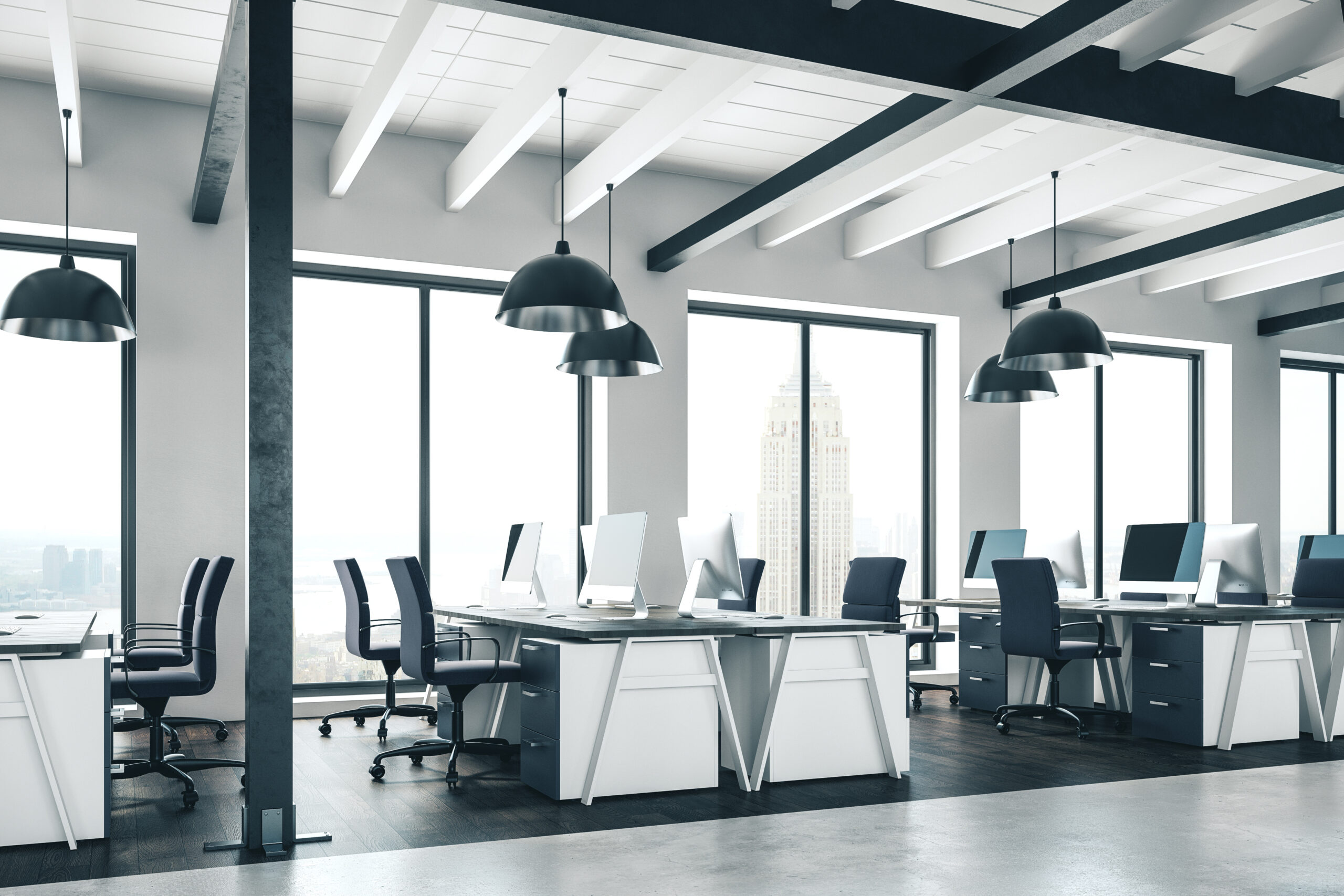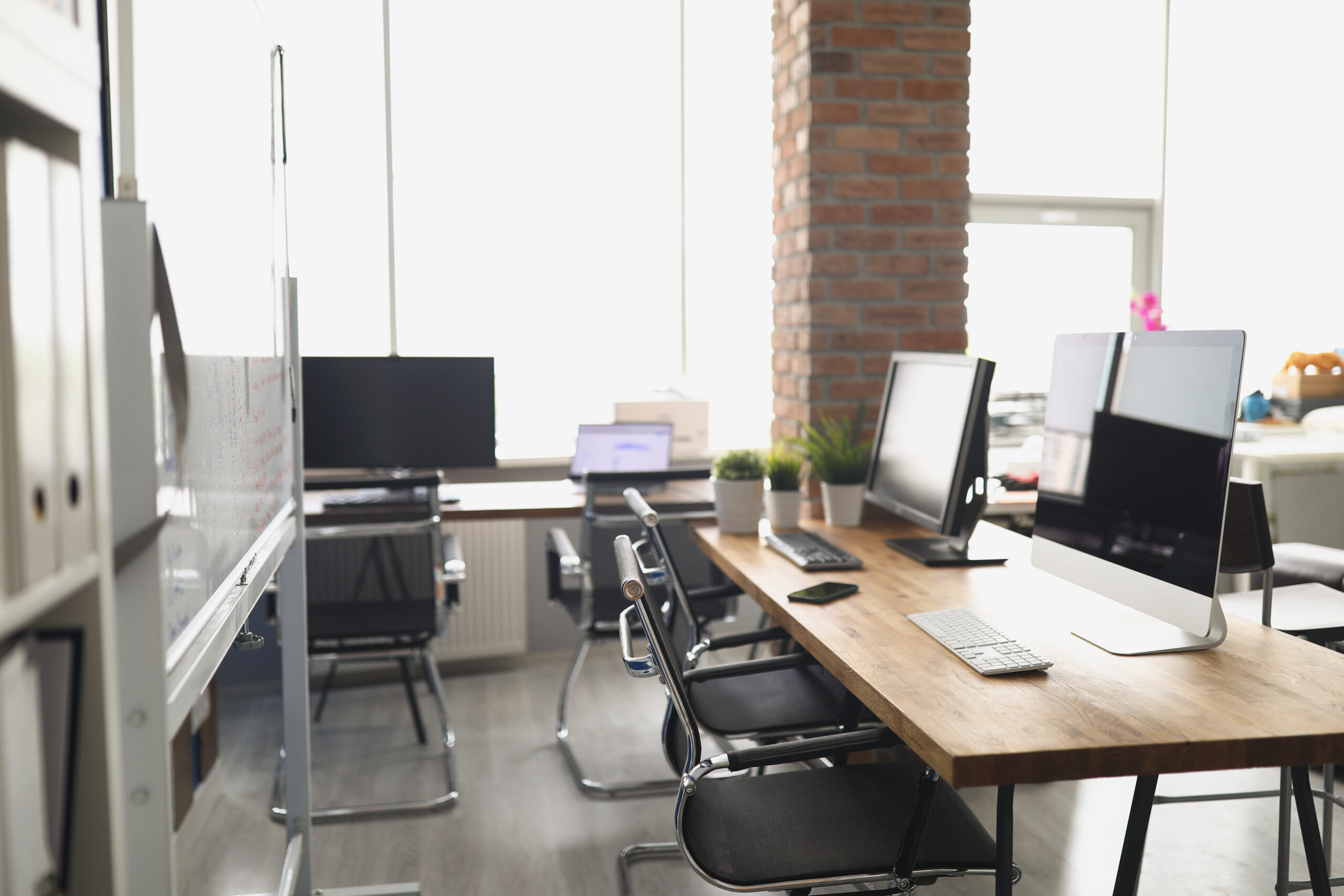Office design significantly impacts employee productivity, with well-designed workspaces enhancing performance by up to 20%. Factors such as spatial arrangement, variety of spaces, noise levels, lighting, and ergonomics influence worker output and well-being.
Different design types, including open-plan, private, and activity-based workspaces, affect collaboration, privacy, and flexibility. Thoughtful design strategies that prioritise employee feedback and ergonomics are essential for fostering a productive and healthy work atmosphere. To understand the nuances of office design‘s impact on productivity, let’s explore it further.
Key Takeaways
- Well-designed workspaces can boost employee performance by up to 20%.
- Open-plan offices promote collaboration but can reduce productivity due to noise and distractions.
- Ergonomic office design, including adjustable desks and supportive seating, improves job satisfaction by 30%.
- Proper lighting and natural light exposure enhance productivity by 15% and engagement by 56%.
- Biophilic elements, such as plants, reduce stress and enhance cognitive function.
Why Office Design Matters for Productivity
The increasing focus on workplace environments highlights the significant impact of office design on employee productivity and well-being.
Research shows that thoughtfully designed workspaces can improve performance by up to 20%, while poorly planned offices can negatively affect job satisfaction and efficiency.
The Growing Focus on the Workplace Environment
Businesses are becoming more aware of how office design affects employee productivity and well-being. This has led to a growing emphasis on creating optimal workspaces that enhance focus, collaboration, and job satisfaction.
Studies show that well-designed offices can boost job satisfaction by 30%, directly influencing employee engagement and efficiency.
Key factors in effective office design include:
- Sound management to minimise noise disruptions
- Proper lighting and ventilation for health and comfort
- Private spaces for focused work and meetings
- Workplace wellness improvements, desired by 87% of employees
What is Workplace Design?

Workplace design involves planning and organising physical spaces to support employee performance, collaboration, and well-being.
Core Principles Behind Workplace Design:
The core principles of effective workplace design focus on:
- Efficient spatial arrangement to enhance productivity
- A mix of workspaces that cater to different needs
- Employee involvement in design choices
- A direct impact on job satisfaction and engagement
- Reinforcement of company culture through workspace design
Modern workplaces have evolved to include flexible environments that support both focused work and collaboration.
The Evolution of Modern Office Spaces
Office design has changed significantly over the years, moving away from cubicle-heavy layouts to open-plan spaces aimed at fostering collaboration and engagement.
The shift toward open-plan offices gained momentum in the early 2000s, with 70% of businesses adopting this style to increase interaction and teamwork.
Today, 70% of offices utilise this design to create productive office environments.
Types of Workplace Designs
Different workplace layouts are designed to meet diverse business needs and employee preferences.
The most common types include:
- Open-plan offices
- Private offices
- Activity-based workspaces
- Remote and hybrid workspaces
Each design has its own advantages and challenges, impacting collaboration, privacy, and productivity.
1. Open-Plan Offices
Open-plan offices are now the dominant workplace layout, accounting for 70% of modern offices. While they encourage collaboration, they also present some drawbacks.
Research highlights the downsides:
- Productivity can drop by 37% due to noise and interruptions
- Face-to-face interactions decrease by 70%, leading to greater reliance on emails
- Disruptions require up to 25 minutes for employees to regain focus
To counteract distractions, companies should balance open spaces with designated quiet areas and private rooms.
2. Private Offices
Unlike open offices, private offices provide a dedicated workspace for focused tasks and confidential discussions.
Studies show that having access to private offices:
- Increases job satisfaction by 30%, leading to higher productivity
- Reduces distractions, creating a calmer work environment
- Supports hybrid designs, blending private spaces with collaborative areas
3. Activity-Based Workspaces
Activity-based workspaces offer a mix of private, shared, and open spaces, allowing employees to choose the most suitable setting for their tasks.
These spaces:
- Encourage movement and flexibility
- Foster teamwork while providing quiet areas for focused work
- Reduce noise disruptions by separating work zones
- Increase job satisfaction by offering a variety
- Improve concentration and creativity among employees
This adaptable approach improves productivity, concentration, and overall well-being.
4. Remote and Hybrid Workspaces
With remote work becoming more common, many businesses are shifting to hybrid models that offer employees the flexibility to work both remotely and in-office.
For maximum productivity, these spaces should feature:
- Ergonomic furniture for employee health and comfort
- Soundproof areas to reduce distractions
- A mix of private and shared spaces for focused and collaborative work
The Relationship Between Office Design and Productivity
Office design and layout have a significant impact on employee performance.
Elements such as noise control, lighting, ergonomics, and aesthetics directly influence focus, motivation, and well-being.
Psychological factors, such as colour schemes and the presence of natural elements, can influence mood and cognitive function, while physical aspects, including ergonomics and ventilation, affect overall well-being and energy levels.
Why Layout and Design Impact Employee Performance
Office layout and design have a profound impact on employee performance and productivity.
Key factors that influence worker output include:
- Noise levels and distractions in open-plan offices
- Availability of diverse working spaces for focused tasks
- Environmental factors like air quality, lighting, and temperature control
- Ergonomic setups to minimise strain and discomfort
- Aesthetic elements such as colours and plants affect mood and concentration
Psychological and Physical Factors Influenced by Design
Psychological and physical factors influenced by office design play a crucial role in determining employee productivity.
Colour schemes affect mood and concentration, with blue promoting focus and yellow encouraging creativity.
Poor air quality and inadequate lighting can decrease productivity by up to 6–9%.
Incorporating biophilic elements like plants reduces stress and enhances cognitive function, leading to increased productivity and overall well-being.
How Office Design Affects Productivity
Office design plays a crucial role in shaping employee productivity by addressing key factors such as noise management, privacy, and personal space:
1. Noise Management
In the fast-paced, collaborative environments of modern workplaces, noise management has become a critical factor in determining employee productivity and overall job satisfaction.
Open-plan offices can lead to:
- Decreased productivity due to high noise levels
- Difficulty concentrating and communicating effectively
- Increased reliance on electronic communication
- Distractions causing context switching and reduced efficiency
- Lower employee satisfaction in poorly managed noise environments
2. Privacy and Personal Space
While open-plan offices have become increasingly popular in modern workplaces, the lack of privacy and personal space can significantly impact employee productivity and well-being.
Providing private rooms for calls and quiet spaces allows employees to recharge, maintain focus, and ultimately enhance job satisfaction and productivity.
3. Flexibility in Workspace Arrangement
How can office design foster productivity and employee satisfaction?
Flexible workspaces that cater to diverse working styles can significantly enhance employee engagement and performance.
Research shows that providing a variety of environments for focused work and collaboration can:
- Increase job satisfaction by 30%
- Reduce stress and maintain concentration
- Support neurodivergent employees
- Improve overall productivity
- Enhance the work experience through thoughtful office design
4. The Role of Hybrid Work Models
As organisations increasingly adopt hybrid work models, the role of office design in fostering productivity becomes more apparent.
Studies show that hybrid offices with flexible workspaces, accommodating both collaborative and focused work, lead to a 30% increase in productivity.
Integrating technology into these designs facilitates seamless communication and collaboration, further enhancing productivity for teams working remotely and onsite.
5. Lighting and Natural Elements
Lighting and natural elements play a crucial role in office design and their impact on employee productivity.
Studies show that:
- Natural light exposure increases wellbeing by 33% and reduces eye strain
- Adequate lighting boosts job satisfaction and performance by 15%
- Biophilic design elements, like plants, enhance employee satisfaction by 20%
- Adjustable lighting improves focus and task efficiency by 10%
- Views of nature increase creativity by 13%
6. Colour Psychology and Its Impact
Colour psychology plays a significant role in office design and its impact on employee productivity.
Blue promotes focus and concentration, while warm colours like yellow stimulate creativity and optimism.
Green, associated with nature, reduces stress and fatigue, enhancing well-being.
Neutral colours create a sense of calm and simplicity, and the strategic use of bright accents invigorates the workspace, contributing to a dynamic atmosphere.
7. Cleanliness and Organisation
A clean and organised office environment plays a crucial role in maximising employee productivity and well-being.
- Tidy workspaces reduce stress levels, leading to better focus and higher productivity.
- Cleanliness improves air quality, boosting productivity by up to 11%.
- The organisation fosters efficiency, allowing quick access to materials.
- Regular decluttering streamlines workflow and collaboration.
8. Ergonomics and Comfort
Ergonomics, the study of designing workspaces to optimise human well-being and performance, plays a crucial role in enhancing productivity within office environments.
Adjustable desks, soft seating, and proper monitor and keyboard arrangement can reduce discomfort, eye strain, and fatigue.
Research indicates that 65% of workers believe ergonomic office design would significantly boost productivity, leading to a 30% increase in employee job satisfaction.
Additional Factors to Consider
In addition to the fundamental aspects of office design, there are several other factors that can significantly influence productivity.
1. Minimising Digital Distractions
Digital distractions have become increasingly prevalent in modern office environments, particularly in open-plan settings where noise levels and context switching can significantly impact employee productivity.
To minimise these distractions and enhance focus, consider the following strategies:
- Designate quiet spaces for focused work
- Implement acoustic panels to reduce noise
- Provide spatial variety for different tasks
- Encourage the use of noise-cancelling headphones
- Establish clear guidelines for electronic communication
2. The Role of Biophilic Design (Plants and Natural Elements)
Biophilic design, which incorporates natural elements like plants and organic materials into the built environment, has emerged as a significant factor in enhancing employee well-being and productivity within office spaces.
Studies reveal that introducing plants can reduce stress by 37%, lower sickness rates, and boost memory retention.
Moreover, biophilic features can improve cognitive function and job satisfaction, leading to a 20% increase in productivity.
3. Designing for Specific Job Functions
While biophilic design contributes to overall employee well-being and productivity, it is equally important to consider the specific requirements of various job functions when designing office spaces.
- Different job functions require tailored workspace designs to optimise productivity.
- Open spaces benefit collaborative roles, while private offices or quiet zones suit concentration-intensive tasks.
- Ergonomic considerations, such as adjustable furniture, are crucial for various job functions.
- Diverse environments within the workplace allow employees to select spaces that align with their tasks.
- Flexible office designs accommodating both collaborative and individual workspaces can enhance productivity.
4. Promoting Health and Wellbeing Through Design
In addition to biophilic design, several other factors contribute to promoting health and well-being in the office environment, ultimately leading to increased productivity.
Adequate ventilation can boost productivity by 11%, while ergonomic setups minimise strain and injuries.
Incorporating wellness rooms for meditation and relaxation addresses the need for privacy in collaborative workspaces, enhancing employee well-being and concentration, leading to improved job satisfaction and efficiency.
Getting Office Design Right
Effective office design must align with the company’s culture and values to create a space that fosters productivity and employee satisfaction:
Aligning Design with Company Culture
Aligning office design with company culture is a critical aspect of fostering employee engagement and productivity.
An effective office layout that reflects organisational values can:
- Enhance employee engagement
- Support collaboration and creativity
- Foster a sense of belonging
- Improve focus and reduce stress
- Motivate employees to perform at their best
Well-designed workspaces directly impact overall productivity and job satisfaction.
Balancing Cost with Functionality
Striking the right balance between cost and functionality is a critical consideration when designing office spaces that foster productivity and employee well-being.
Investing in ergonomic furniture, flexible workspaces, and biophilic design can enhance comfort and productivity while reducing long-term health-related costs.
Iterating Based on Employee Feedback
Incorporating employee feedback is a critical step in designing office spaces that optimise productivity and well-being.
Engaging workers in the design process leads to:
- Accommodating diverse work styles and needs
- Reducing distractions in open-plan layouts
- Promoting privacy and focus
- Increasing job satisfaction by 30%
- Improving employee engagement and performance
Iterating based on employee input ensures that workspaces effectively support the organisation’s productivity goals.
Frequently Asked Questions
How Can a Design Influence Productivity?
Office design can influence productivity through factors such as ergonomics, lighting, noise levels, and layout. A well-designed workspace that minimises distractions and promotes comfort can lead to increased focus, efficiency, and overall job satisfaction among employees.
How Does Job Design Affect Productivity?
Job design significantly impacts productivity by organising spaces that enhance focus, collaboration, and problem-solving. Ergonomic workspaces and diverse environments tailored to employee preferences and roles can boost performance, job satisfaction, and overall workplace happiness.
How Does Organizational Design Increase Productivity?
Organisational design is the backbone of productivity, aligning workspaces with business goals. By fostering collaboration, communication, and adaptability through thoughtful layouts and employee feedback, companies can unlock a 20% boost in efficiency and job satisfaction.
How Does Your Workspace Affect Your Productivity?
Workspaces significantly impact productivity through factors such as noise levels, ergonomics, and environmental elements. Well-designed spaces with comfortable furniture, natural light, and minimal distractions can boost focus and overall performance, leading to increased job satisfaction and efficiency.
Conclusion
Office design significantly influences employee productivity and well-being through factors such as layout, ergonomics, and environmental elements. To optimise performance, organisations must carefully consider the multifaceted impact of design choices on their employees, as these decisions ultimately shape the success and efficiency of the entire workplace.


